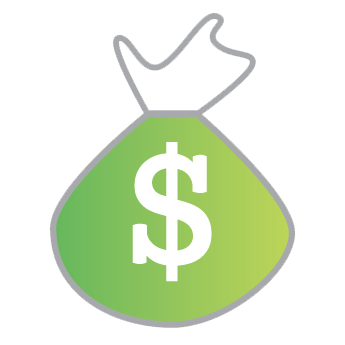The Interest Rate Review Sheet hit my desk last week and out jumped the alarming prospect that fixed rates may turn very soon, and start to climb.
With the world moving and dynamic economic events occurring daily, borrowers are not aware of the daily interest rate movements that accumulate into a wave, and by the time they reach you, a major change in your investment cash flow has occurred and you may have missed the boat.
With home loan interest rates below 5% pa and a cash rate at historic lows of 2.5%pa, is it time for you to jump on potential savings that can cut years off your home loan with interest rate savings?
To help decide what’s right for you, here are the 5 Key Signals that can affect your interest expense and determine the difference between saving your hard-earned money and throwing it down the drain.
1) What’s it Worth To You?
Borrowers use fixed rates as a method of insurance against increases in interest rates so it’s vital to understand the value and savings from choosing fixed rates over variable rates.
Do you know the dollar savings from a fixed rate or it’s worth to you?
Consider this: $400,000 Home Loan: Variable 5%pa versus 3 yrs Fixed Rate 4.7%pa
If you fix your rate now, you are creating 0.3%pa interest saving = $1,200 per year.
Are you interested in saving $1,200 per year? Of course! And if variable interest rates drop below your fixed rate, are you still feeling good about paying an extra $800 interest each year?
Tip: Fixing your rate is buying insurance against upward movements in interest rates. Consider both dollar savings against rising interest rates or if rates fall, be aware of the extra cost.
2) Timing
Look for fixed rate changes as fixed rates are future expectations of lenders. If the lenders anticipate the cash rate falling in the future, they usually offer a fixed rate that is lower than the current variable rate. Sometimes, they add further discounts to attract new business. Whatever the reason, fixed rates precede changes to the variable rate.
The key is to be fixing within 0.5% of the bottom of the market. If you pick the bottom, you are doing exceptionally well.
It all about the timing.
Tip: Keep an eye on the bank’s fixed rates. Look for the first signs of fixed rates increasing, it’s a strong indication that we are hitting the bottom of the interest rate cycle.
3) How Long?
To help determine how long you wish to lock in your rate, think about where you were 5 years ago, and remember the investments and the rates back then. For many active investors, that’s a blur and may have been quite a few properties back.
I remember 5 years ago, the cash rate was 7.25% pa, not 2.5% pa, and a standard home loan was hitting 10% pa. If you had locked in then, you may have missed out on the next 5 year’s lower rates.
In hindsight it’s always easy to see what to do, however it’s important to realise 5 years is a long time in investment and you have to be sure that you are willing to fix for a very good reason.
Tip: Acknowledge the change that can occur in your life and daydream the changes that could occur in your life in the next 5 years, before you lock in your home loan.
4) Debt Stress – Are you Worried?
How at ease are you today with your repayments? The level of ease or dis-ease is the stress of carrying debt.
If you have debt that is planned and manageable, then you may not be concerned with upward changes in interest rates. However for some, debt is a mountain that will take 30 years to pay off, and every cent counts.
Locking a rate can provide much-needed certainty in life, and locking your interest rate to near record lows is a great investment decision.
Tip: The test is: “Do you lay at night thinking about your investments?” If so, fixing may be a strategy to help you sleep soundly.
5) Staying Flexible
Staying flexible is the strategy for active investors who can’t sit still with their property investments. They buy, sell, refinance and need to keep agile with variable rates, allowing flexibility to payout the loan or chop and change without penalty.
The cost of breaking a fixed rate loan can be very significant. Lenders call it ‘Economic Break Cost’ which simply means they calculate their loss of benefit on the remaining term of the loan and charge it to you when paying out the loan. It’s a complicated calculation, however the longer the term remaining, the higher the penalty. If you get the term of the fixed rate wrong, you are certain to have wiped out any gain over the past few years… and sometimes this factor weighs heavily in favour of staying with variable rates.
Tip: If in doubt, stick to variable and stay flexible.
The Verdict:
I have watched many clients experience the highs and lows of fixed rates. In every case, the analysis of the interest rate is just as important as analysing buying or selling the property.
The rule of thumb for many investors is: “In the long-term, variable rates win.” Well, I agree that this is true most of the time, with one exception: when we hit the bottom of the cycle.
With a few lenders now considering raising fixed rates, we are close to the bottom of the cycle and that will provide you with an excellent opportunity to fix a portion of debt which may provide enough savings to make a significant increase to your personal wealth.
Happy investing.
This article was featured on Smart Property Investor, here. If you are in need of a Financial Health Check, contact us on 1300 039 801 today to arrange an appointment!
_________________________________________________________________________________________
 Anton Hamer is the Finance Director at Plan Assist. With over 20 years of financing property purchases and assisting over 1,000 property deals as a Licensed Mortgage Broker, Anton is a Property Investor Specialist Mortgage Broker focused on a holistic property strategy, aimed at achieving wealth through property.
Anton Hamer is the Finance Director at Plan Assist. With over 20 years of financing property purchases and assisting over 1,000 property deals as a Licensed Mortgage Broker, Anton is a Property Investor Specialist Mortgage Broker focused on a holistic property strategy, aimed at achieving wealth through property.
_________________________________________________________________________________________









